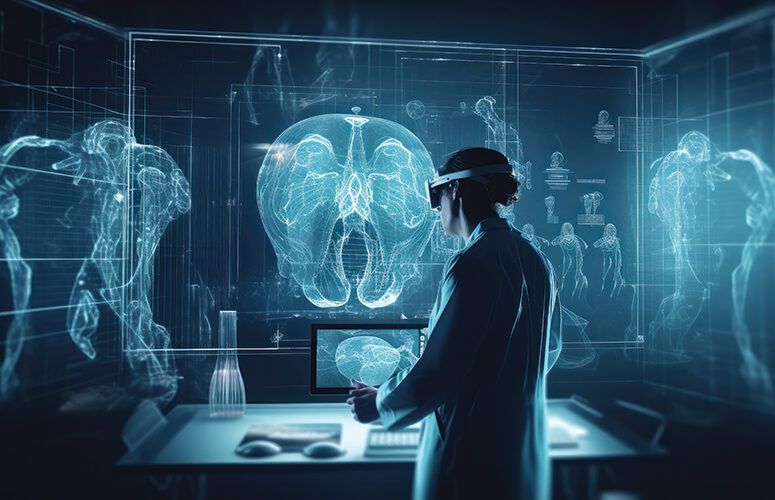
Cutting-Edge Trauma and Emergency Care
Key innovations at NJ’s trauma centers are helping to save the lives of the most critically injured.
By Jim Pytell, Managing Editor On Jun 6, 2023Trauma centers and emergency departments are the first units that the most critically ill or injured patients will see upon arriving at a hospital, so having the most cutting-edge technology and innovative solutions at these units is paramount to ensure the best outcomes for patients.
While emergency rooms typically provide care to people with injuries ranging from a sprained ankle to a heart attack – and are staffed with doctors, nurses, and medical experts who handle a variety of conditions – trauma centers are for patients with the most extreme injuries, and have specially trained physicians and surgeons who specialize in treating traumatic injuries.
New Jersey is home to a number of Level 1 trauma centers, which provide the highest level of trauma care to critically ill or injured patients.
The Trauma Center at Cooper University Hospital in Camden was established in 1982 and today is the busiest trauma center in the southern New Jersey region.
Much of the innovation at Cooper’s trauma unit is aimed at being more efficient and ultimately saving time, which in an emergency situation is often the difference between life and death.
“What we have shown in trauma is the importance of the people,” says Dr. John Porter, Cooper University Health Care head, division of trauma surgery and director, center for trauma services, Cooper University Health Care.
He explains that while many view innovation as leveraging new technologies in various ways, Cooper is leveraging its people in ways that are innovative.
“What we do that almost no other trauma center does in the country is keep our nurses separate from the emergency department nurses, so the same nurses that take care of a patient in the trauma bay are also taking care of that patient in the ICU,” he says. “One of the challenges that everyone is trying to solve is how to get better handoffs so information isn’t lost when a patient is moved from one unit to the next. We didn’t solve that challenge with technology, but instead solved it with people. We have nurses specially trained in both ICU and trauma so there is no handoff. He or she doesn’t need to tell another nurse what he or she did in the trauma bay, since they stay with the patient across both units.”
Another unique attribute at Cooper is its helipad.
Porter explains that trauma patients arriving by helicopter can receive immediate care on the hospital’s helipad from a trauma resuscitation team via a fully equipped resuscitation room located on the helipad.
“As soon as a patient lands on the helipad, if they are unstable, we can start working on them there,” he continues. “Even if you have a key to the elevator and are going downstairs, that still takes 3-4 minutes, and if you are bleeding to death, you can die in 3-4 minutes.”
He says that anything that can be done in the trauma or emergency department can be done on the helipad. “No one else has that in New Jersey,” he says.
On the procedure front, Cooper was also the third academic tertiary care health system in the US to offer whole blood transfusions for trauma patients who present with massive bleeding and hemorrhagic shock. Trauma centers are the only hospitals to offer whole blood transfusions.
“In simple terms, when time is of the essence, using whole blood rather than blood components ensures early replacement of clotting factors that have been depleted with traumatic injury,” Porter says.
Additionally, last year, Cooper opened a new, dedicated Acute Stroke and Neuro Interventional Suite within its emergency department – the first of its kind in the nation.
The suite is equipped with the latest generation Siemens biplane angiography system with an integrated CT scanner and fully integrated surgical image guidance, allowing minimally invasive intracerebral hemorrhage evacuation procedures.
Catherine T. Ginty, MD, medical director, emergency department, Cooper University Health Care, explains that Cooper’s neurointerventional team is able to treat emergent and non-emergent forms of cerebrovascular disease, including acute stroke of any type, cerebral aneurysms, carotid artery disease, and other serious conditions affecting the brain and spinal cord, faster than ever before.
“Now, patients who come into the emergency department with neurological symptoms will be evaluated and treated right where they enter the hospital without the need for time-consuming transfers,” Ginty says.
The Level I Trauma Center at Robert Wood Johnson University Hospital (RWJUH) cares for nearly 2,500 trauma patients annually in an emergency department that sees nearly 90,000 patients each year. In addition to treating the seriously injured, clinical faculty also conduct research and educate other healthcare professionals about the most recent advances in trauma care.
The patient rooms at the trauma center feature overhead lighting, enabling physicians to perform procedures in the room without transporting a patient. The rooms also have medical equipment booms that are designed to free the workspace and keep equipment clean and off of the ground. Each room has large glass doors that open completely, making patient transport easier, and can be made transparent or opaque.
Mayur Narayan, MD, chief, division of acute care surgery, professor of surgery, trauma medical director, Robert Wood Johnson University Hospital and Rutgers Robert Wood Johnson Medical School, says that over the next several years, he believes the area of artificial intelligence (AI) within the trauma care setting is going to take off and push the envelope for what is possible in the educational healthcare setting.
“With AI, you will be able to do an operation in an elective setting before the operation is done on the real patient,” he says. “In other words, you will be able to conduct the operation on a patient’s specific anatomy in a simulated setting so pitfalls unique to that patient’s anatomy can be seen before the actual operation.”
In essence, it’s a fully customizable trial run of a procedure that will transform the way that we think about medical training, teaching and learning.
The innovations mentioned above are just a few ways that the state’s trauma centers are staying on the cutting edge and thinking outside the box when it comes to caring for the most critically injured. There is more on the horizon too, as University Hospital in Newark is set to embark on a $1.8 billion facility master plan that aims to transform North Jersey’s only Level 1 trauma center and deliver even more comprehensive care. When it comes to matters of life and death, New Jersey’s innovation is literally saving lives.
To access more business news, visit NJB News Now.
Related Articles:





